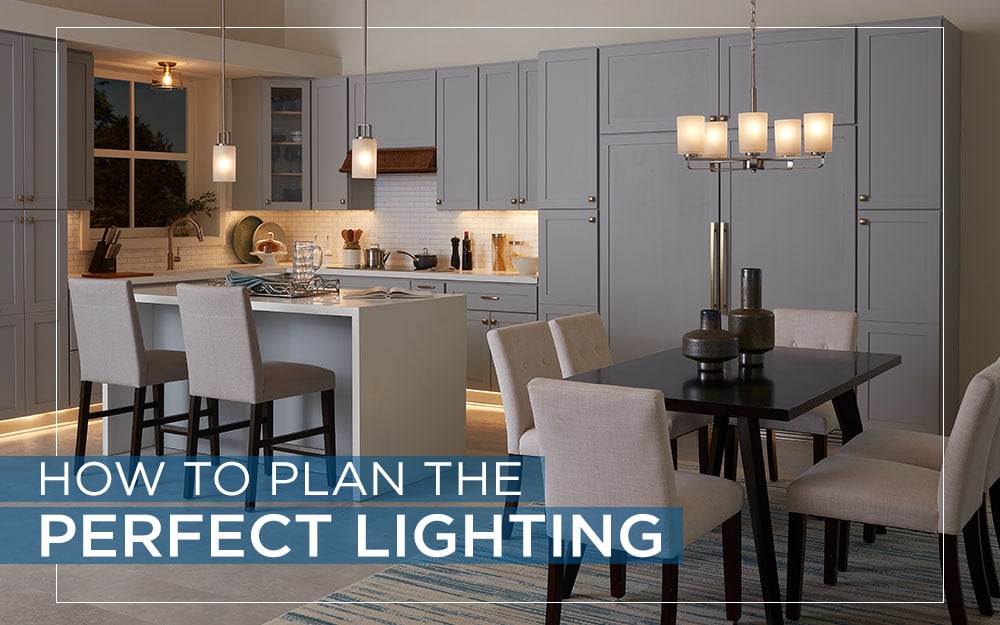With all the fantastic, beautiful and functional lighting styles on the market today, it's easy to fall in love with the perfect fixture. However, there are a few things to keep in mind when planning your lighting design. Here's a room-by-room tour of how to plan the perfect lighting for your home.
Exterior
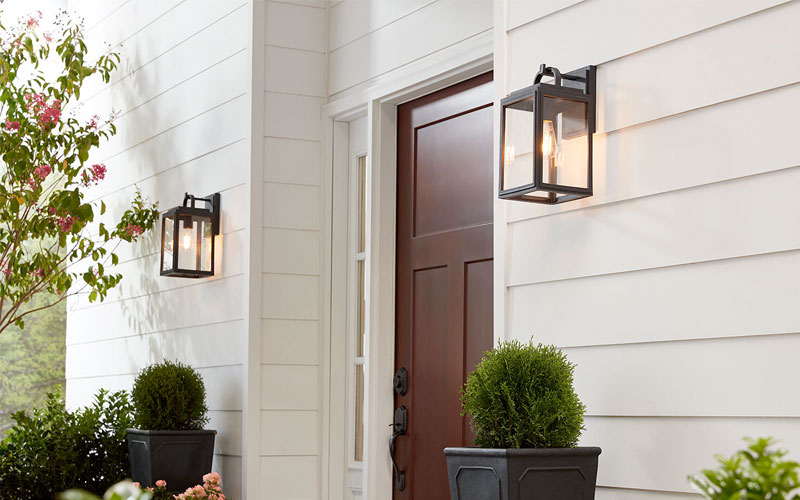
Featuring: Granbury
Welcome family and friends.
Rules of thumb: make sure you've planned for enough fixtures to light the way safely after dark. Select fixtures and ceiling fans that are rated for outdoor use. Finally, choose fixtures composed of a durable, non-corrosive material that holds up to harsh and changing weather conditions, like our DURASHIELD fixtures. They're created from engineered composite polymers that wear well and deliver beautiful lighting and reliability.
Foyer
First impressions count.
In the foyer, avoid installing recessed lighting in a straight line, which creates a sterile "runway" effect. Stagger recessed lighting in the ceiling and install a stunning statement foyer light. If foyer ceilings are low (8 feet or less) consider a flush-mount or semi-flush mount fixture instead.
Living Room/Great Room
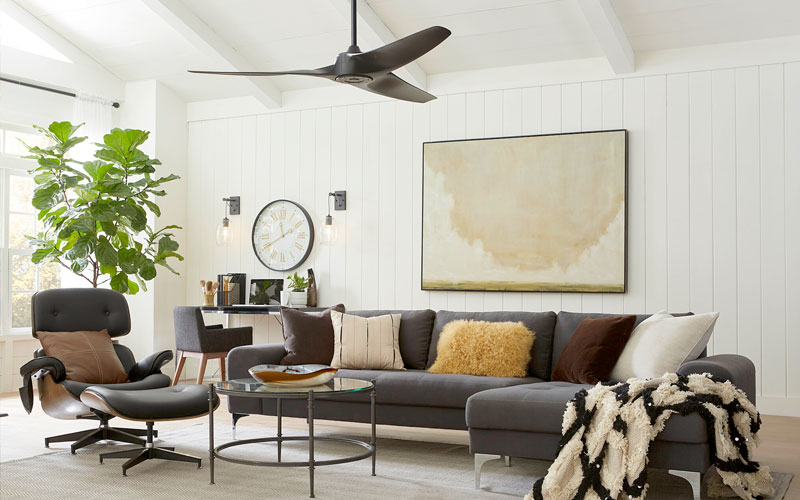
Featuring: Manvel & Caisson
Layer light for maximum impact.
Open floor plan living rooms call for a combination of lighting to create a layered light. General light can come from natural daylight and overhead lighting, like recessed lights plus a statement overhead ceiling light or a generously sized ceiling fan. Use task lighting like pendants to provide lighting on desks and islands. Wall mounted fixtures complete the look, adding another layer of light and contributing to a softer feel.
Kitchen
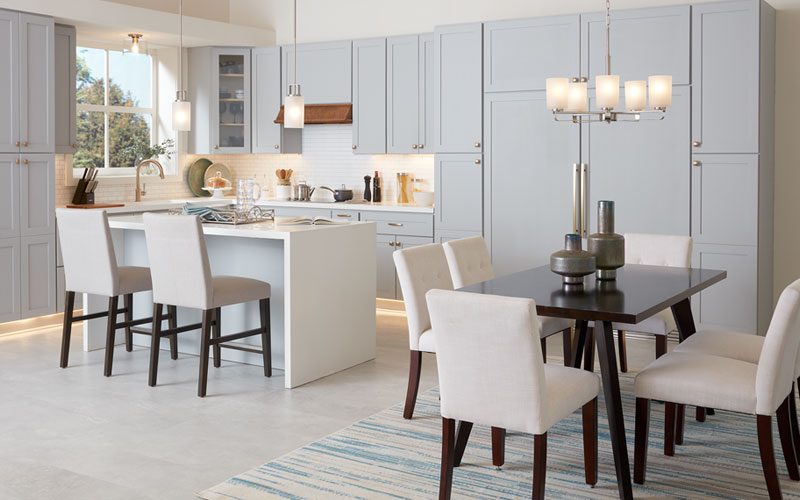
Featuring: League & Adley
The heart of the home.
it's important to make sure the kitchen is lit correctly without over-lighting the space. Light layering is key here, too. Ambient light sources like flush mount fixtures and recessed lighting should be placed on dimmer switches to adjust light levels during the day and evening. Task lights are ultra-important to properly light all the different tasks that happen in the kitchen: use pendant lights over islands and undercabinet lights to illuminate countertop work surfaces.
Dining Room
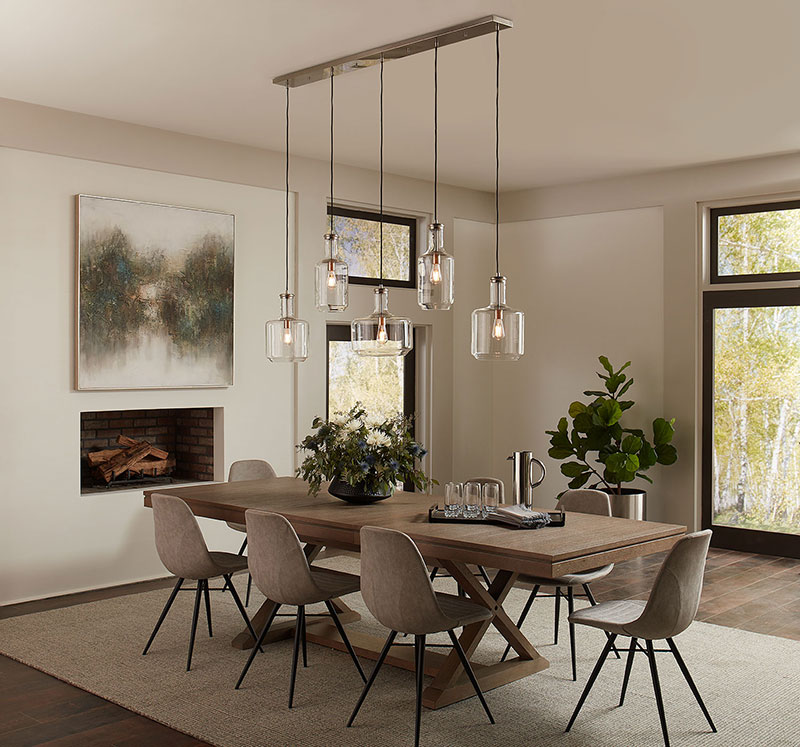
Featuring: Latrobe
Go big - or go multiple.
While it's usual to hang one dramatic chandelier over the dining room table, another option is to hang groupings of pendants. Remember they need to clear the head of the people sitting at the table (or kitchen island). A good rule of thumb is to hang the bottom of the fixture 36"to 48" above the surface. Wall fixtures add a delightful and personal finishing touch to the room. And do not forget to use dimmer switches to help create the ideal dining ambiance.
Bedroom
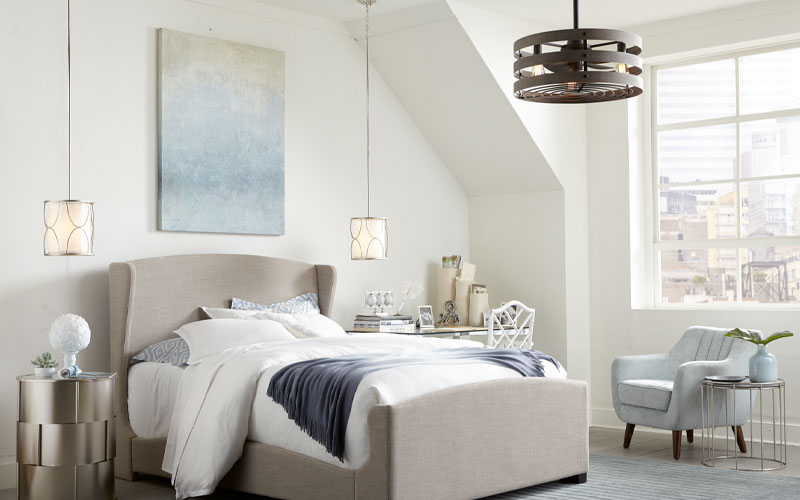
Featuring: Landree and Gulliver
Bedrooms are for relaxing.
Do not install any type of light that could give off glare in the bedroom. For example, avoid placing a downlight directly over the bed. A new, fun trend is to install pendants on either side of the bed over the nightstand, freeing up space and create a wow factor.
Bathroom
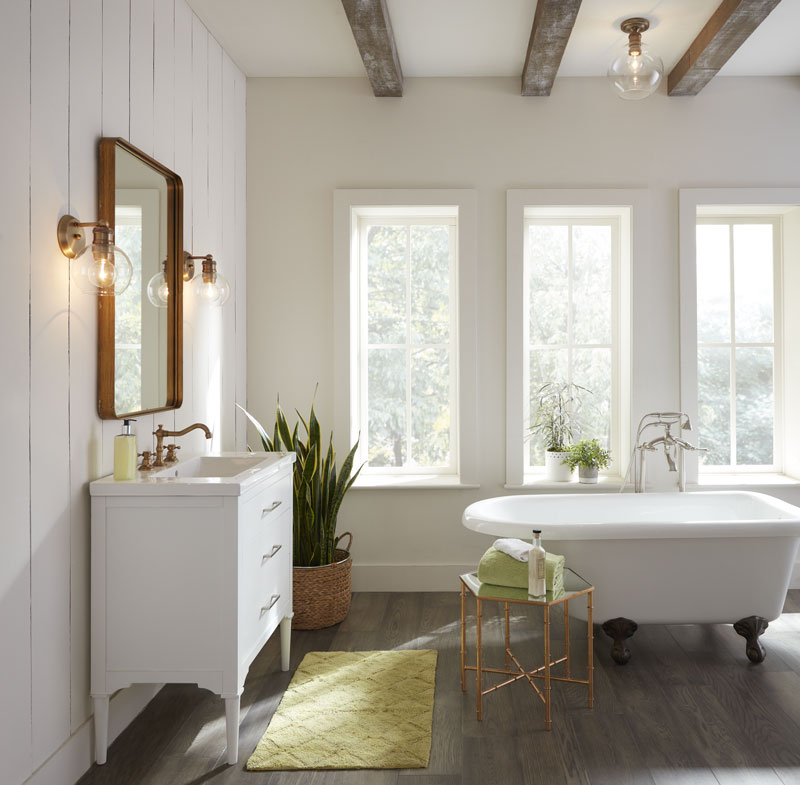
Featuring: Hansford
Location, location, location.
The most important rule is to select bathroom fixtures that are damp or wet rated, depending on where they are installed. Vanity lighting near the sink area needs to be damp rated. Choose wet-rated recessed lighting for places like the shower where direct contact with water is possible. If you're installing a chandelier or pendant over a free-standing tub, the bottom of the fixture must measure at least 7 feet from the floor.
SHOP LIGHTING
